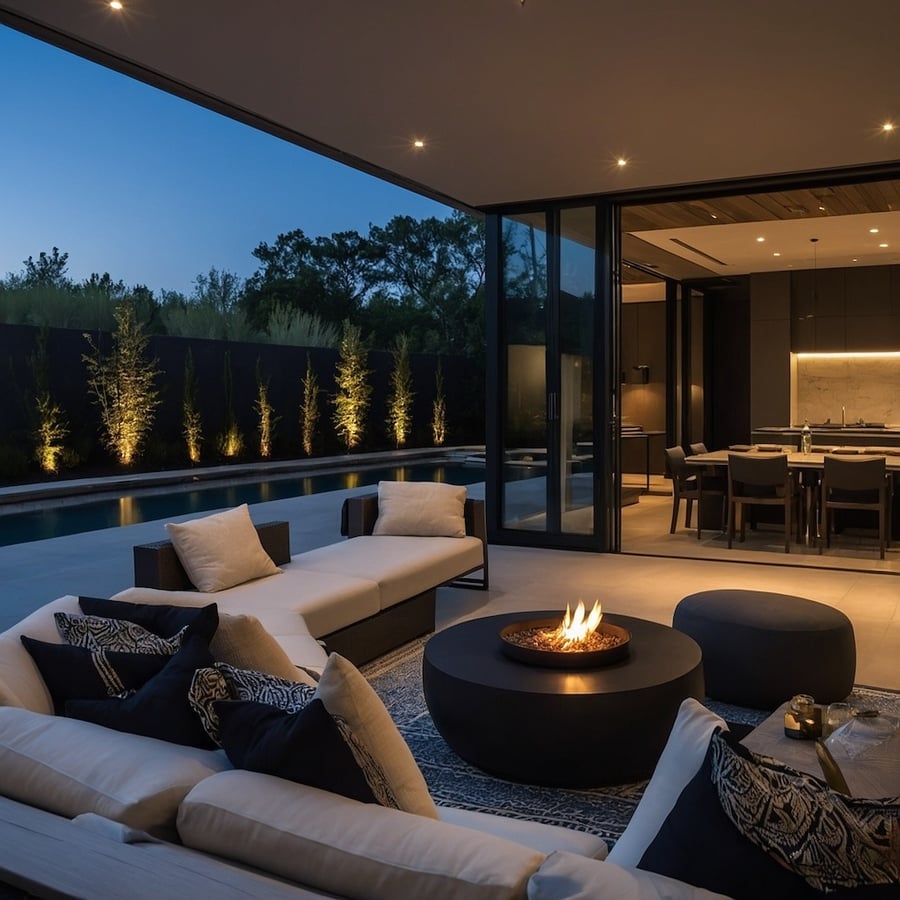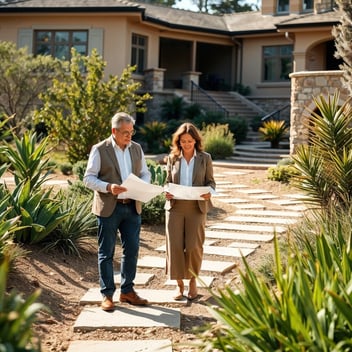Creating Luxurious Outdoor Spaces: A Designer's Guide to Functionality

Want to know a landscaper's secret? The most stunning outdoor spaces aren't just about looks – they're carefully orchestrated environments where every element serves a purpose while contributing to the overall aesthetic. After 25 years of creating award-winning landscapes across Long Island, I've learned that true luxury lies in the perfect marriage of form and function.
Trust me, I've seen more than my share of beautiful but impractical spaces that end up being more showpiece than living space. Today, I'm going to share my proven approach to creating outdoor spaces that aren't just Instagram-worthy, but actually enhance your lifestyle.
The Foundation: Understanding Your Space's Potential
Here's a fun trick I learned the hard way: before we even think about design elements, we need to understand your property's natural flow. It's like choreographing a dance – you need to know the stage before you plan the performance.
Key Considerations for Space Analysis:
- Topographical features and natural grade changes
- Sun patterns and shade areas throughout the day
- Existing architectural elements and viewpoints
- Natural water flow and drainage patterns
- Privacy concerns and neighborhood sight lines
Strategic Elevation: The Power of Retaining Walls
Let me share something that might surprise you – some of the most dramatic transformations in my career have come from strategic elevation changes. As a retaining wall specialist, I've seen firsthand how these structural elements can completely revolutionize a space.
Think of retaining walls as the architects of your outdoor canvas. They can:
- Create multi-level entertainment spaces
- Solve drainage issues while adding visual interest
- Maximize usable space on sloped properties
- Define distinct outdoor rooms
- Add seating and architectural interest
For more detailed insights on retaining wall solutions, check out our comprehensive guide to retaining wall construction and repair.
The Art of Zoning: Creating Purposeful Spaces
Here's another insider tip: the most successful outdoor spaces follow the principle of purposeful zoning. Just like your home has different rooms for different activities, your outdoor space should have distinct areas designed for specific purposes.
Essential Zones to Consider:
- Entertainment Areas: Designed for hosting and gathering
- Dining Spaces: Protected from elements but connected to kitchen access
- Relaxation Zones: Quiet areas for reflection and unwinding
- Active Areas: Spaces for recreation and physical activity
- Transitional Spaces: Pathways and connections between zones
For inspiration on how to implement these zones in your specific space, take a look at our guide on master high-end landscape design for luxury homes.
Material Selection: The Foundation of Functionality
Let's talk about one of the most crucial decisions in outdoor design – material selection. I can't tell you how many times I've seen stunning designs fail because of poor material choices. The key is selecting materials that not only look luxurious but can stand up to your specific environment and usage patterns.
Premium Material Considerations:
- Natural stone vs. manufactured products
- Hardwood vs. composite decking
- Permeable vs. solid surface paving
- Native vs. exotic plant materials
- Lighting technology and durability
For more insights on incorporating natural elements, explore our article on native plants and sustainable landscaping.
Integration of Technology
Here's something that might surprise you – technology integration is becoming as important in outdoor spaces as it is indoors. I've seen a dramatic shift in how smart technology can enhance outdoor functionality without compromising aesthetics.
Smart Features to Consider:
- Automated irrigation systems with weather monitoring
- Smart lighting controls for ambiance and security
- Outdoor audio-visual systems
- Climate control features (heating, cooling, shade)
- Smart pool and water feature controls
Seasonal Adaptability
One of the biggest mistakes I see, even in high-end properties, is designing spaces that only shine in one season. In our Long Island climate, your outdoor space should be designed for year-round enjoyment. Learn more about this approach in our guide to year-round property management.
Year-Round Design Elements:
- Four-season plant selections
- Weather-protected gathering spaces
- Heating elements for extended seasonal use
- Snow management considerations
- Multi-purpose water features
Maintenance Considerations
Let me be straight with you – even the most beautiful outdoor space can become a burden if maintenance isn't considered in the design phase. The key is creating spaces that maintain their luxury appeal without requiring excessive upkeep.
For professional maintenance insights, check out our complete seasonal lawn care checklist.
The Investment Perspective
As someone who's worked with luxury properties for over two decades, I can tell you that well-designed outdoor spaces are one of the best investments you can make in your property. But here's the key – the investment should be strategic and aligned with both your lifestyle needs and property values.
Explore our commercial property landscape design guide for more insights on value-driven design approaches.



